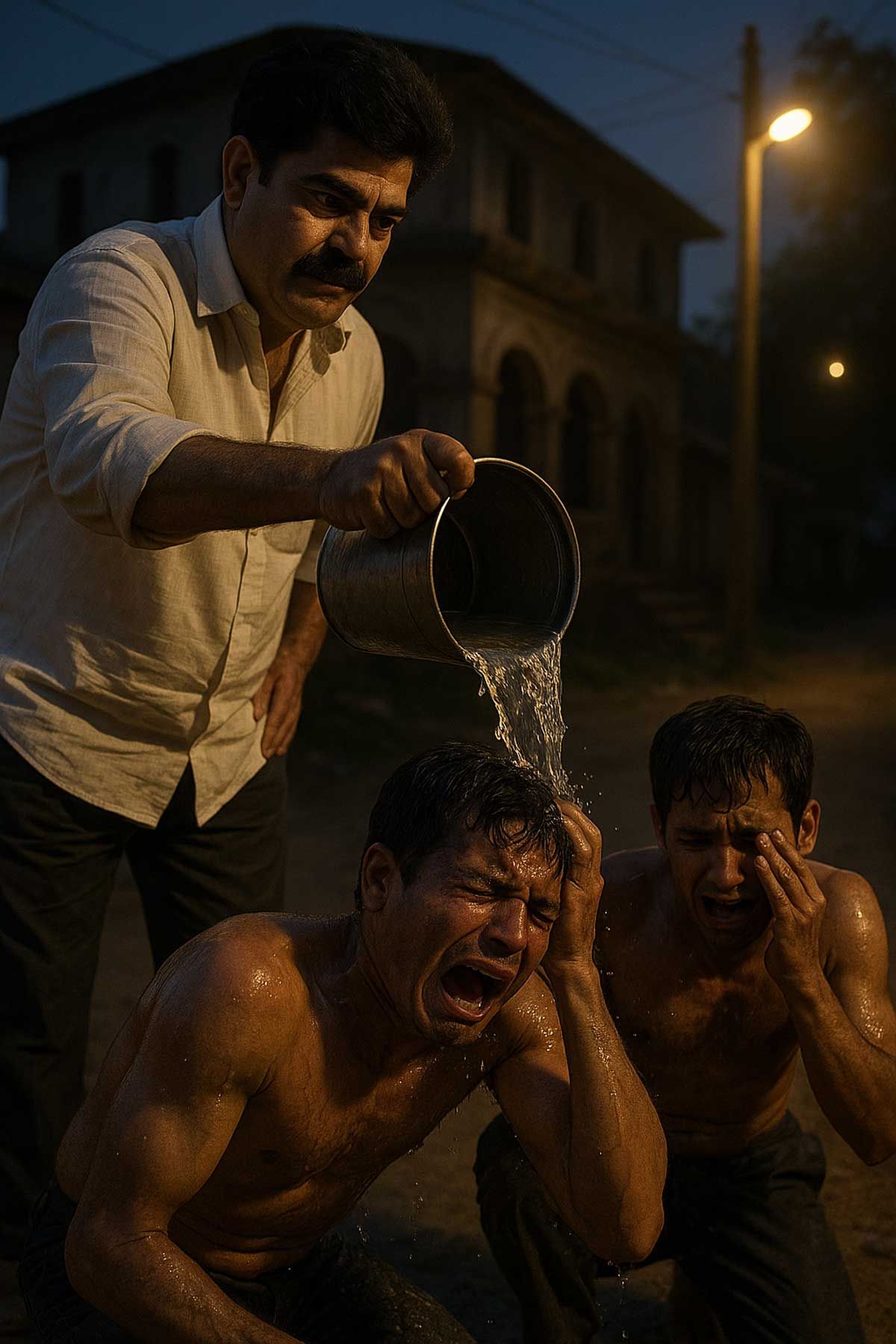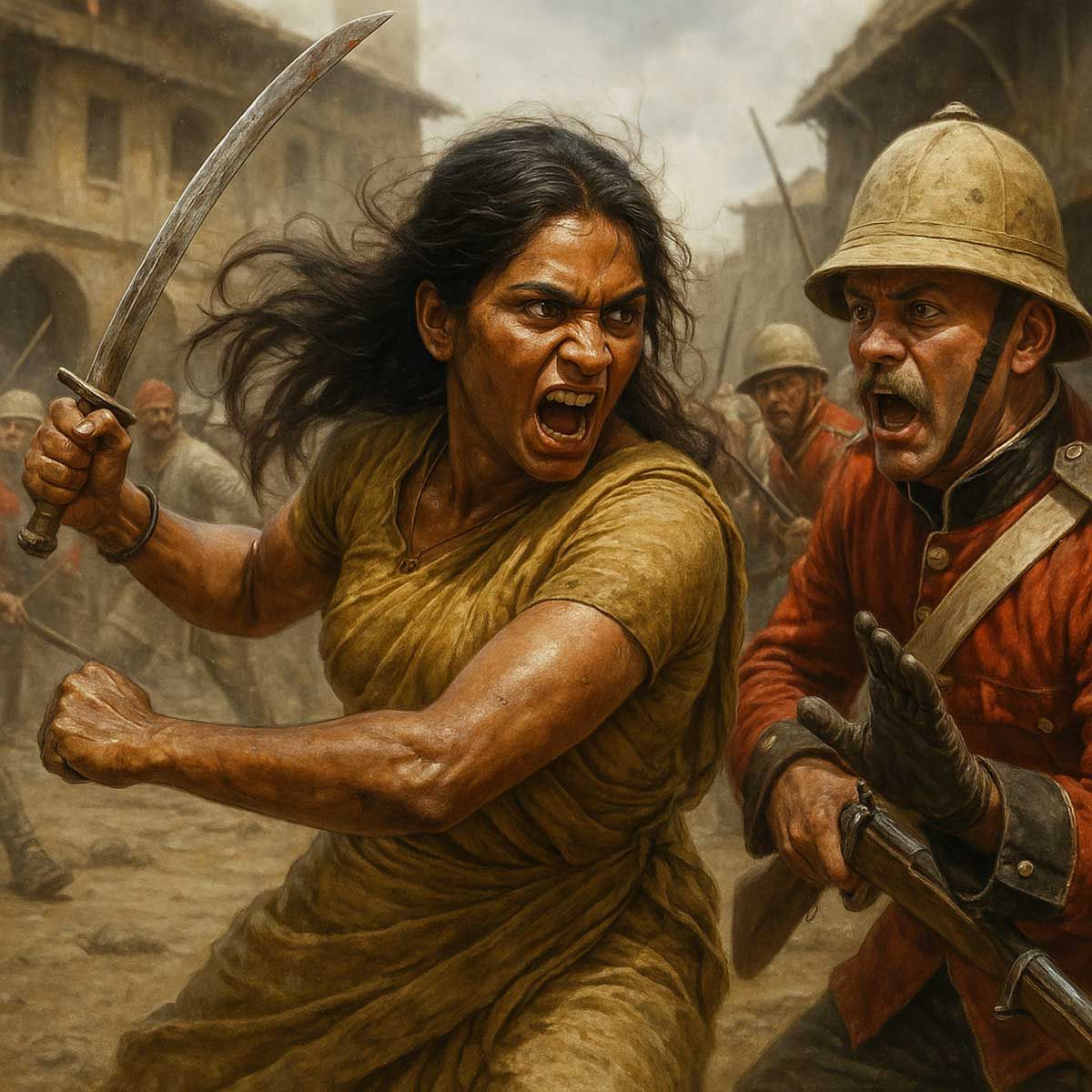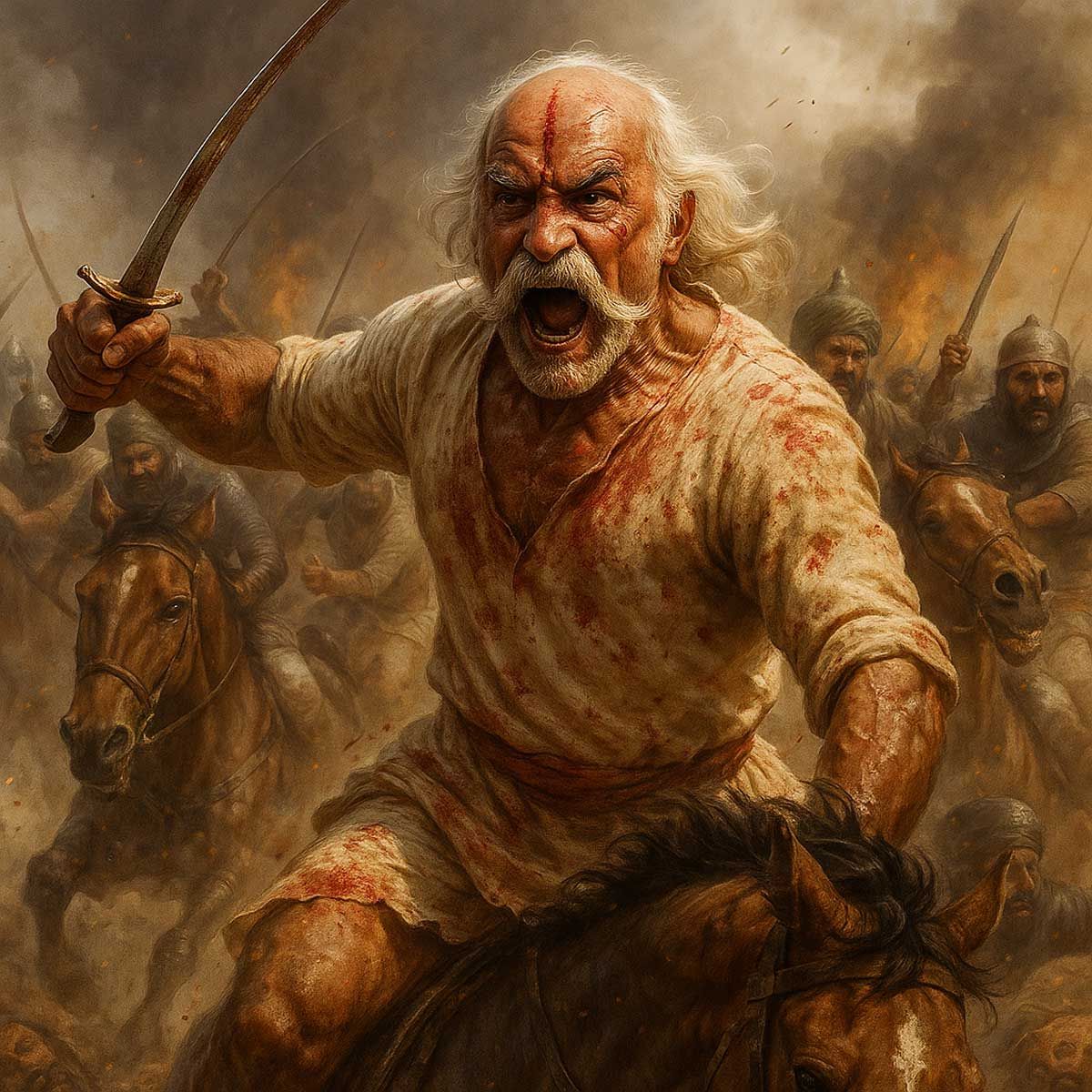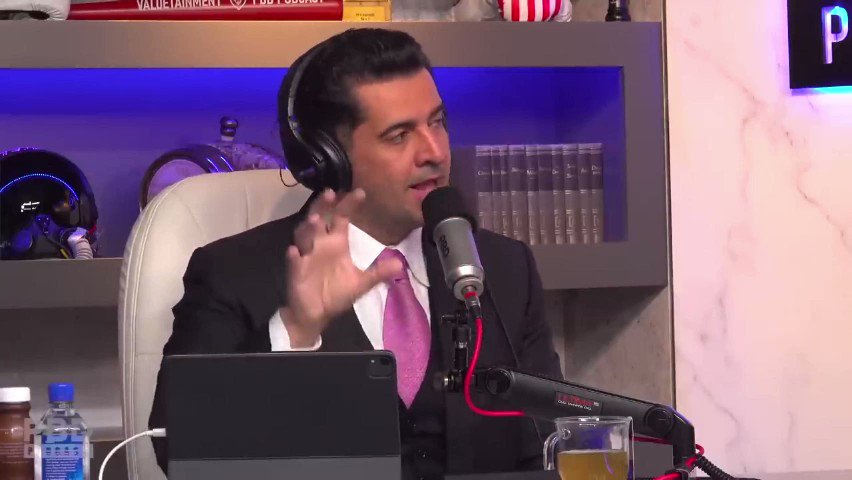MORE COVERAGE
Twitter Coverage
Satyaagrah
Written on
Satyaagrah
Written on
Satyaagrah
Written on
Satyaagrah
Written on
Satyaagrah
Written on
JOIN SATYAAGRAH SOCIAL MEDIA
"जंगलराज": In Lalu Yadav’s jungleraj, gangsta Shahabuddin ruled Siwan with fear—two brothers bathed in acid, cut into pieces, their witness brother shot dead, yet their father fought 14 years for justice, finally jailing the don in a Supreme Court verdict

In the 1990s, Bihar plunged into a period infamously dubbed the “jungle raj,” a time when crime and chaos ruled and politicians openly sheltered gangsters. At the heart of this era was a chilling nexus between Rashtriya Janata Dal (RJD) supremo Lalu Prasad Yadav and his protégé, Mohammad Shahabuddin, a notorious strongman from Siwan. Shahabuddin was not just an RJD leader – he was Lalu’s close aide and muscle on the ground.
With Lalu’s patronage, Shahabuddin grew virtually invincible, his name becoming synonymous with lawlessness and terror. A 2001 civil liberties report noted that the RJD government’s patronage and de facto immunity made Shahabuddin “a law unto himself,” allowing him to turn Siwan district into his personal fiefdom where nobody dared testify against him. During this time “Shahabuddin’s reign of terror” was absolute – “the entire area trembled at the very name of Shahabuddin”. Under Lalu’s rule, such bahubalis (strongmen) enjoyed political protection, and Bihar’s common folk lived in fear, their cries for justice smothered by the collusion of crime and power.
The relationship between Lalu Yadav and Shahabuddin was both political and personal, emblematic of the era’s corrupt power structure. Shahabuddin had risen through Lalu’s ranks – joining Lalu’s youth wing in the early 1990s and later becoming an RJD Member of Parliament. In return, he delivered loyalty and muscle. Lalu openly defended and embraced Shahabuddin despite his long criminal record, even drafting him into the RJD national executive committee in 2016 while he was in jail.
Such unflinching political backing emboldened Shahabuddin and paralyzed law enforcement. Locals recall that in those days, “khauf ka doosra naam Shahabuddin tha” – terror itself went by the name Shahabuddin. He openly ran a parallel administration in Siwan, holding kangaroo courts, fixing prices, and punishing enemies with impunity. Any whisper of dissent was met with brutal retribution, and the “bahubali” knew he had patronage from Patna. This was the dark backdrop against which a horrific crime unfolded – a crime so ghastly that it would shock the nation and, years later, pierce the courts with its brutality.
|
Prelude to a Nightmare: A Family in the Crosshairs
The story centers on Chandrakeshwar Prasad, better known as Chanda Babu, a grocer in Siwan who unwittingly challenged Shahabuddin’s might. Their feud had begun years before the bloodbath. In the mid-1990s, Chanda Babu asked a tenant to vacate a shop he owned – a tenant who happened to be close to Shahabuddin. The don’s men demanded ₹2.5 lakh as “settlement” money for this eviction, an extortionate sum that Chanda Babu staunchly refused to pay.
This act of defiance marked him for revenge. In the underworld of Siwan, such defiance was an affront to Shahabuddin’s authority. “They wanted money, but I would not give away my hard-earned livelihood to Shahabuddin,” Chanda Babu later said, recalling how this dispute planted the seeds of enmity. Shahabuddin’s animus toward the family only simmered hotter with time. By 2004, Chanda Babu’s family – his wife, daughter, and four sons – were living under the shadow of this threat, unaware that a night of unimaginable horror was approaching.
The Night of Acid and Fire (August 16, 2004)
August 16, 2004 – a date seared into Siwan’s memory. That monsoon night, Chanda Babu was away in Patna, but his sons were tending the family’s two provision shops on Gaushala Road. Around midnight, Shahabuddin’s henchmen arrived at the shop where 23-year-old Satish Raj was closing up, and demanded ₹2 lakh in extortion money. Satish’s 18-year-old brother Girish was at their second shop nearby. When Satish refused to pay the goons, an argument broke out.
The gangsters began to beat Satish mercilessly as Girish stood by in alarm. Desperate and bleeding, Satish broke free, ran into the back room and grabbed a bottle of acid – a common chemical kept for cleaning – and hurled it at the assailants. The corrosive liquid splashed on one or two of the attackers, causing them to howl in pain and retreat. For a brief moment, it seemed the young men had fended off the threat.
But that moment was short-lived. The goons soon returned with reinforcements, enraged and bent on revenge. This time they came in greater number and with a vehicle. They stormed both shops, rounding up Girish, Satish, and their eldest brother 36-year-old Rajiv Roshan, who had rushed over when he heard the commotion. The three brothers were forcibly abducted at gunpoint as onlookers scattered in fear. The kidnappers then torched one of the shops – setting it ablaze as a warning that Shahabuddin brooked no resistance.
Neighbors dared not intervene; in Shahabuddin’s Siwan, even witnesses feared for their lives. Under the cover of darkness, the gang dragged the three captives to Pratappur, Shahabuddin’s native village and stronghold, about 7 km away.
In a field on the outskirts of Pratappur, the orgy of violence reached its horrific climax. Shahabuddin himself arrived to preside over the punishment, according to later witness accounts. The goons separated Rajiv from his two younger brothers, tying him to a tree in a nearby sugarcane field – forcing him to watch what would come next. Girish and Satish, bound and terrified, were made to kneel. Shahabuddin allegedly spoke with icy rage: since Girish and Satish had dared to throw acid on his men, “they should learn how much acid hurts”, he said. At the kingpin’s signal, his henchmen tipped a full bucket of acid and “bathed” the two brothers with the corrosive liquid. Blood-curdling screams echoed in the night as the acid seared flesh and bone, effectively burning the young men alive.
Rajiv, the eldest, was forced to witness his brothers’ torture – their skin blistering and charring – until their screams fell silent. Not content with this brutality, the killers then mutilated the bodies – chopping the remains of Girish and Satish into pieces and stuffing them into sacks. The gruesome parcels were dumped like garbage, and to this day the police were never able to recover the bodies of the two brothers. In the span of a few hellish minutes, two young lives were erased in what a judge would later call a “rarest of rare” act of cold-blooded cruelty.
Miraculously, Rajiv Roshan managed to escape that night amid the chaos. As the gang was disposing of the bodies, Rajiv wriggled free of his bonds in the darkness and fled for his life. He ran until he reached Siwan town and, half in shock, sought refuge at the house of the local Member of Parliament. There, this lone surviving witness to the massacre hid under protection, knowing full well that Shahabuddin’s men would be hunting him next. The nightmare of that night was over, but for the Prasad family, an even longer nightmare was just beginning.
|
A Family in Fear and a Father’s Fight
When news of the attack reached Chanda Babu in Patna, it came with a chilling warning: two of your sons are dead, don’t return to Siwan or you’ll be killed next. Heartbroken and terrified, Chanda Babu’s family fragmented. His wife Kalawati Devi, their two daughters, and the youngest son (who was physically disabled) all fled their home that very night, fearing Shahabuddin’s wrath. The don’s henchmen even spread false rumors that one of Chanda Babu’s sons had “fallen from the roof” – a ploy to lure the father back to town, presumably to kill him as well. For days, Siwan remained a ghost town for the Prasad family, overtaken by the specter of Shahabuddin’s terror.
Summoning every ounce of courage, Chanda Babu defied the threats and snuck back into Siwan under cover. Instead of finding help, he encountered apathy and intimidation. The local police refused to register a case or even provide protection; one officer bluntly advised him to “leave Siwan at once” if he valued his life. Shahabuddin’s influence on the police was palpable – justice was subverted at every turn. Desperate, Chanda Babu turned to politicians. He approached a prominent leader in Patna for help, only to have the politician literally wash his hands of the matter out of fear or complicity.
Shahabuddin’s goons extended their menace to Chanda Babu’s extended family as well – his brother was threatened so viciously that the brother fled Bihar entirely, taking refuge in faraway Mumbai. With nowhere safe in Siwan, Chanda Babu relocated to Patna and continued his quest for justice from the state capital.
Months turned into years. Chanda Babu knocked on every door he could. He even traveled to Delhi to meet Congress leader Rahul Gandhi, pleading for intervention. Rahul expressed sympathy and gave assurances, but nothing concrete materialized – Shahabuddin’s clout cast a long shadow even over national figures. It was only after relentless persistence that Chanda Babu finally found a sliver of hope in the system. He met with DIG A.K. Beg, a senior police official, and told his story in detail.
Shocked by the tale, the DIG reprimanded the local Siwan police and arranged armed security for Chanda Babu. Under guard, the bereaved father was at last able to return to Siwan, years after the murders. By then, even his home had been ransacked and life as he knew it was gone. Still, he refused to be broken.
For a time, it seemed at least one member of the shattered family might find a measure of normalcy. The eldest son Rajiv Roshan, who had escaped the acid massacre, eventually came out of hiding once Shahabuddin was jailed (as we will see). Rajiv returned to Siwan and even got married in May 2014, hoping to start anew. But fate dealt another cruel hand. Just 18 days after his wedding, on June 16, 2014 – only three days before he was due to testify in court about his brothers’ murders – Rajiv was gunned down by motorcycle-borne assassins. The timing was no coincidence: the key eyewitness to the acid killing had been eliminated at the eleventh hour. From behind bars, Shahabuddin was suspected of orchestrating Rajiv’s murder to sabotage the case against him. Chanda Babu filed an FIR naming Mohammad Shahabuddin as the conspirator who had his men execute Rajiv. It was yet another devastating blow – in the span of a decade, the Prasad family had lost three sons to Shahabuddin’s vendetta, and only one disabled son remained alive.
Chanda Babu’s resolve, however, was now beyond fear. “I died the day my two sons were killed, and then again when I lost my third,” he said. “It doesn’t matter if God takes me or if Shahabuddin kills me”. Having lost everything, the 70-year-old father stood as an emblem of endurance in the face of terror. He refused multiple offers from Shahabuddin’s camp to “settle” or withdraw the case – no bribe or threat could deter him. For him, justice for his sons was the only purpose left in life. The stage was set for a historic legal battle: a lone family versus one of India’s most dreaded political dons.
|
The Long Road to Justice
A turning point came in 2005, when Lalu Prasad’s 15-year rule ended and Nitish Kumar became Bihar’s Chief Minister on the promise of restoring law and order. The new government lost no time in cracking down on Shahabuddin’s empire of crime. In a dramatic operation in November 2005, Shahabuddin – who had been evading arrest – was tracked down and arrested in Delhi. The once-untouchable don was brought back to Bihar in irons.
With the political winds shifted, the rule of law began catching up. Shahabuddin faced a barrage of prosecutions for his many crimes: at one point he had no less than 39 cases of murder, kidnapping, and other heinous offenses against him. One by one, convictions started piling up in the lower courts. Still, Shahabuddin’s clout persisted – he managed to secure bail in 38 of those 39 cases, walking free each time.
The one case that continued to pin him down was the Siwan double murder – the acid bath case – because it was so high-profile and horrifying that it proved difficult to quash. As long as Rajiv Roshan (the surviving witness) was alive and willing to testify, Shahabuddin remained behind bars without bail.
However, after Rajiv’s assassination in 2014, Shahabuddin saw an opening. With the prime witness gone, his lawyers pressed for bail yet again. In September 2016, the Patna High Court granted Shahabuddin bail, allowing him to walk free after 11 years in jail. The don’s release sparked public outrage and political turmoil in Bihar. Unapologetic and audacious, Shahabuddin was greeted by cheering supporters in Siwan, and he brazenly told the media that “only Lalu Prasad is my leader; Nitish Kumar is just a chief minister by circumstance”.
This open snub to the state government underscored how emboldened he felt by Lalu’s ongoing support. For Chanda Babu, the news of Shahabuddin’s freedom was devastating – he famously said that if the gangster walked free, “it is my death sentence”. The celebration was short-lived: responding to a petition and public outcry, the Supreme Court swiftly canceled Shahabuddin’s bail in October 2016, sending him back to prison.
Meanwhile, the wheels of justice crept forward. The Siwan District Court (a special court set up within the jail for security) conducted the trial for the 2004 acid murders. In December 2015, Judge Ajay Kumar Srivastava pronounced Shahabuddin and three of his henchmen guilty of the double murder and destruction of evidence. Calling it a rarest-of-rare case, the court awarded all four convicts a sentence of life imprisonment.
The verdict noted the grotesque nature of the crime: the brothers were killed by “giving them an acid bath” and their bodies had been dismembered. As the judgment was read out, Chanda Babu and his wife quietly wept in the courtroom. After over a decade, this was a measure of vindication for their sons’ souls. Yet, the father felt the punishment did not match the crime – “We honor the court’s judgment, but it would have been fair if the murderers of my sons got death,” he said softly. Still, lacking the means to pursue a death penalty appeal, Chanda Babu accepted the life sentence as justice he could live with.
Shahabuddin, however, was not done fighting. He appealed the conviction to the Patna High Court, dragging the legal process on. In August 2017, the High Court upheld the trial court’s verdict, affirming Shahabuddin’s guilt and life term. Undeterred, Shahabuddin appealed further to the nation’s highest court. Finally, in October 2018, the Supreme Court of India weighed in – and delivered the final blow to the gangster’s legal maneuvering. A bench led by Chief Justice Ranjan Gogoi dismissed Shahabuddin’s appeal within minutes. As Shahabuddin’s lawyer attempted to argue, the justices cut him off with a scathing query: “Why was Rajiv Roshan – who was going to testify – killed? Who was behind that murder?”.
The Supreme Court was openly voicing what everyone knew: the pattern of witness elimination pointed straight to Shahabuddin. With that, the apex court confirmed the life sentence, ensuring that Shahabuddin would remain in prison until the end of his days. Outside the courthouse, 74-year-old Chanda Babu folded his hands and thanked the heavens. Justice had prevailed. After nearly 14 years of relentless struggle, the Siwan acid case had concluded with the mighty don held accountable for his crimes.
|
Timeline of Key Events
Mid-1990s: Mohammad Shahabuddin rises in Lalu Yadav’s RJD and gains notoriety in Siwan. Dispute erupts with Chanda Babu after an RJD-linked tenant is evicted; Shahabuddin’s men demand extortion money, which Chanda Babu refuses. Enmity between the don and the family begins.
August 16, 2004: Shahabuddin’s henchmen attack Chanda Babu’s sons for refusing to pay extortion. Girish (18) and Satish (23) are abducted and brutally murdered – bathed in acid and dismembered – on Shahabuddin’s orders. The eldest son Rajiv Roshan (36) escapes after witnessing the killings.
2005: Lalu’s regime ends. Under Chief Minister Nitish Kumar, police arrest Shahabuddin and lodge him in jail. Numerous criminal cases against him are revived.
December 2015: A special court in Siwan convicts Shahabuddin and three associates of the 2004 acid murders and sentences them to life imprisonment. Chanda Babu’s family expresses relief but had hoped for a death sentence.
June 16, 2014: (Earlier) Rajiv Roshan is assassinated in Siwan days before he can testify against Shahabuddin. Shahabuddin, from jail, is named as an accused conspirator in this third murder.
September 2016: Patna High Court grants bail to Shahabuddin, sparking public outrage. After 20 years of domination, the don walks free briefly, declares his loyalty to Lalu, and ridicules the state government.
October 2016: The Supreme Court cancels Shahabuddin’s bail, forcing him back to prison, as courts take a tougher stance on Bihar’s mafia raj.
August 2017: Patna High Court upholds Shahabuddin’s conviction in the acid case (dismissing his appeal). Chanda Babu hails the decision as a victory for justice.
October 30, 2018: The Supreme Court dismisses Shahabuddin’s final appeal, upholding the life sentence. The verdict brings an end to Shahabuddin’s legal options in the acid-murder case – the conviction is final.
May 2021 (Epilogue): Shahabuddin dies in Tihar Jail at age 53 after contracting COVID-19, while serving his life term. (His death marked a quiet end to the once-feared don of Siwan.)
|
Chilling Legacy of the Tezaab Kand
The Siwan “Tezaab Kand” (acid case) remains one of the most terrifying chapters in Bihar’s criminal history. It encapsulates an era when the rule of law had crumbled, and a powerful few indulged in unspeakable violence under political protection. The image of two brothers being drenched in acid on a crime lord’s whim still haunts the public psyche. This case also stands as a testament to the courage of ordinary citizens like Chanda Babu. Despite the murder of three sons and the might of a feared don arrayed against him, this grieving father fought an uphill battle for years, armed only with faith in the judiciary and an iron will. His fight led to Shahabuddin’s jailing and ultimately to a landmark affirmation by the Supreme Court that even the most powerful are not above the law.
Journalists have called Siwan’s acid murder case a symbol of the “reign of terror” that Shahabuddin held and the “jungle raj” that prevailed in Bihar. It is a story as much about political complicity as it is about crime – illustrating how a dreaded mafia don flourished under a patron-politician and how that nexus exacted a horrific human cost. The chilling tale of Shahabuddin and Lalu’s nexus, and the slow yet eventual triumph of justice in the acid-bath murders, continues to send shivers down the spine of all who hear it. It serves as a grim reminder of a dark age when lawlessness reigned – and a beacon showing that even in the darkest times, perseverance and truth can prevail in the end.
 Support Us
Support Us
Satyagraha was born from the heart of our land, with an undying aim to unveil the true essence of Bharat. It seeks to illuminate the hidden tales of our valiant freedom fighters and the rich chronicles that haven't yet sung their complete melody in the mainstream.
While platforms like NDTV and 'The Wire' effortlessly garner funds under the banner of safeguarding democracy, we at Satyagraha walk a different path. Our strength and resonance come from you. In this journey to weave a stronger Bharat, every little contribution amplifies our voice. Let's come together, contribute as you can, and champion the true spirit of our nation.
 |  |  |
| ICICI Bank of Satyaagrah | Razorpay Bank of Satyaagrah | PayPal Bank of Satyaagrah - For International Payments |
If all above doesn't work, then try the LINK below:
Please share the article on other platforms
DISCLAIMER: The author is solely responsible for the views expressed in this article. The author carries the responsibility for citing and/or licensing of images utilized within the text. The website also frequently uses non-commercial images for representational purposes only in line with the article. We are not responsible for the authenticity of such images. If some images have a copyright issue, we request the person/entity to contact us at This email address is being protected from spambots. You need JavaScript enabled to view it. and we will take the necessary actions to resolve the issue.
Related Articles
- "जंगल राज": Two grandsons of Lalu Yadav's brother have been arrested by Patna Police for the premeditated murder of a police officer's son at a birthday party, sparking a high-profile investigation across Bihar’s political and law enforcement landscape
- In 1999, Shilpi-Gautam murder shook Bihar as they were found in a car at MLA Quarter No. 12, linked to Sadhu Yadav, forensics showed multiple rapes, Sadhu refused DNA testing, Shilpi’s brother kidnapped for reopening the case, yet CBI ruled it suicide
- "Being an artist is supposed to be a scam, not a career": CBI asks court to cancel Deputy CM Tejashwi Yadav's bail for 'threatening officers', also accused of involvement in "land-for-jobs" case during Lalu Yadav's tenure as Railway minister in UPA I Govt
- "JungleRaj Horror": IAS Officer BB Biswas fled in despair as his wife Champa, alongside her mother, maids, and niece, endured two brutal years of rape by Mritunjay Yadav, a close associate of Lalu Yadav, in a shocking abuse of power & political corruption
- Retired judges slammed VP candidate Sudarshan Reddy for meeting convicted RJD chief Lalu Prasad Yadav in the ₹940 crore fodder scam, as Amit Shah warned of his past rulings
- Bihar, once a hub of 'Jungle Raj', now eyes private sector reservations, while neighboring UP focuses on actual growth. Can Tejashwi Yadav's promises change Bihar's fate, or is it another chapter in the Yadav family's legacy of empty rhetoric?
- "राज़": After Lalu Prasad Yadav expelled his son Tej Pratap for misconduct, old wounds reopened around the mysterious 2006 death of Abhishek Mishra—BIT Mesra student and boyfriend of Lalu’s daughter Ragini—whose case still echoes with secrecy and suspicion

























